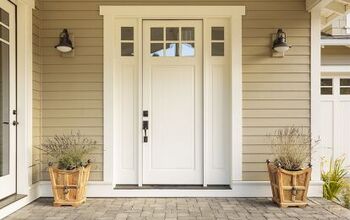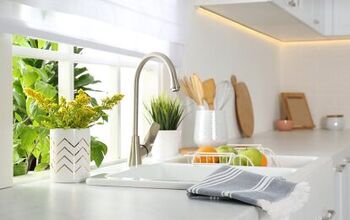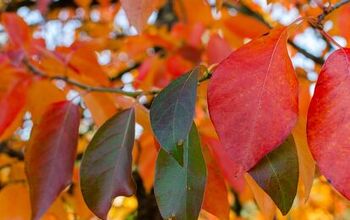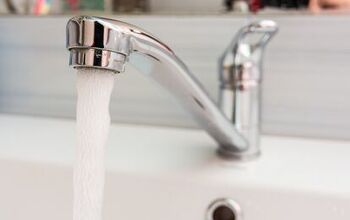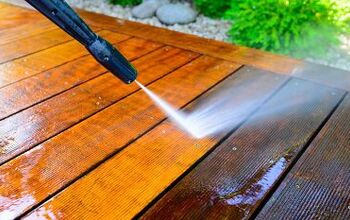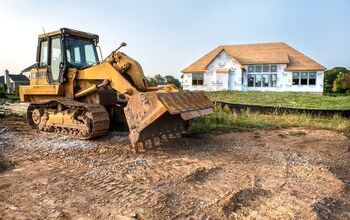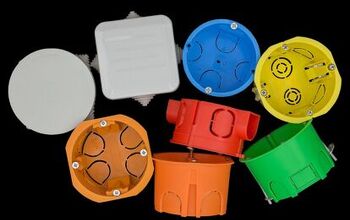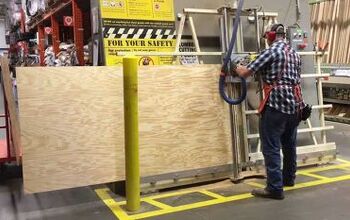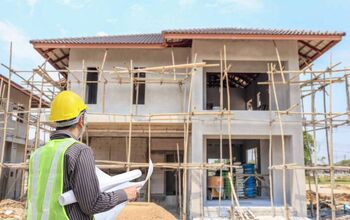14 Easy And Effective Ways To Improve Soil Drainage In The Garden

If you’ve ever watched your plants slowly die under puddles of rainwater, then you’ve witnessed firsthand the importance of soil drainage. Well-drained soil allows water to pass through and reach the roots of plants. It also prevents root rot and allows oxygen to reach the plants. If the plants in your yard are constantly struggling due to poor soil drainage, you need to find ways to remedy the situation.
To improve soil drainage in your garden, consider adding mulch, compost, diatomaceous earth, perlite, and other natural materials to loosen the soil and make it easier for water to pass through. Avoid walking on your garden beds to help prevent soil compaction. Add water-loving plants in wet areas to reduce the risk of root rot, and add an improved drainage system.
Soil drainage problems are often hidden from view. It’s only when you notice plants struggling, or see erosion and pools of water in your lawn, that you are likely to realize you have a drainage issue. The good news is that there are many ways to improve the drainage in your garden to help keep your plants healthy and your yard happy.
14 Effective DIY Ways To Improve Soil Drainage In Your Garden
1. Compost Your Garden
Compost is usually added to gardens to help boost nutrients that plants need. While this is an amazing benefit, it is not the only reason to use compost. Compost can help make your soil more porous, which helps open up airways and improve drainage.
It is especially effective at binding to clay earth and changing the overall structure of the soil. If your garden struggles with drainage, ensure you add compost regularly to help combat the issue. If you have a compost pile, add your finished compost to your soil to save money on pricey store-bought options.
2. Sand
When you watch waves hit the sand on a beach, you probably also notice that the water immediately disappears. This is because sand is incredibly porous and drains faster than just about any type of soil.
Adding sand to your dense soil is a great way to improve its drainage. The porous nature of the sand allows water to pass through the soil more efficiently, and helps prevent soil from compacting.
3. Add Mulch
Quality mulch has many benefits. It helps regulate soil temperature, protect roots, and keep soil moist. When you mix it in with topsoil, it can also help improve drainage.
This is particularly true with chunky mulches made of wood chips and bark. Best of all, as the mulch breaks down, it releases nutrients. This helps feed the plants while also promoting better soil drainage.
4. Fold In Diatomaceous Earth
Diatomaceous earth is another popular gardening material that can help with soil drainage. It is porous by nature, which allows water to pass through more freely. It is also light and airy, so it won’t weigh down your plants, and it helps keep your soil loose.
If you also struggle with pests like slugs, ants, and other crawling pests, diatomaceous earth is effective at keeping these pests out of your garden.
5. Build Raised Beds
If your yard has clay soil or another type of soil that is very compacted, consider building some raised garden beds. DIY garden beds are simple yet effective, and they can even add an organized aesthetic to your garden.
Garden beds have the benefit of additional topsoil, which you add yourself. This gives you control over the soil and its composition.
6. Incorporate Water-Loving Plants Into Wet Areas
If your poor soil drainage is causing water to pool up in your yard, then incorporate some plants that absorb lots of water. Many plants are great in wet areas, as they are effective at sucking up excess water.
If you have certain areas of your yard that tend to flood, build a rain garden or plant a water-loving tree to help reduce this soggy soil problem.
7. Add A Layer Of Gravel
If you have some extra pea gravel or another type of fine gravel, consider adding a layer under your topsoil. Gravel can help improve drainage in raised beds and in other pre-planned gardens. It is particularly effective at reducing the risk of root rot, as it encourages the water to move below the roots.
8. Create A Drainage System
Sometimes the problem with your soil drainage is best solved by creating better overall drainage in your yard. This is particularly true in low-lying areas and in places that experience significant rainfall.
Building a French drain, swale, or another effective drainage system will significantly help yards that can’t absorb all the water Mother Nature brings.
9. Aerate Your Soil
One of the most common reasons for poor soil drainage is compacted soil. This issue can occur over time, especially in areas that experience heavy foot and tire traffic. One of the first steps you can take to help improve soil drainage and also the overall health of your lawn is to aerate the soil.
As a general rule of thumb, you should aerate the soil once a year, either in the spring or the fall. Soils more prone to compaction can benefit from more frequent aeration.
10. Incorporate Perlite
Perlite is a lightweight, white, volcanic material that occurs naturally. It has many practical uses, and one of the most popular ones is to help improve soil drainage. You have likely seen small white rocks in garden soil. This is perlite.
Folding this volcanic rock into your soil works wonders for soil drainage. It is very porous and incredibly lightweight, making it ideal for gardens with compacted soils.
11. Find Ways To Reduce Soil Compaction
Since soil compaction is a common cause of poor soil drainage, you should do your best to mitigate this issue. In addition to adding materials on this list to your soil and aerating it, you should also avoid walking in your garden.
While some walking is essential, you should try your best not to step near your plants where the roots are. Consider adding fences around your gardens to keep animals out and minimize foot traffic.
12. Use Landscaping To Help Redirect Water
In addition to adding drainage, you can also use landscaping to help redirect the flow of water when it rains. Consider adding features like dry streams, adding a sloped garden, rock walls, and other landscaping techniques. These can all help redirect water, so it doesn’t overwhelm your soil each time it rains.
13. Consider More Container Gardens
If you have tried everything and your plants keep suffering in the dense soil, then container gardens are a reliable option. Since you can control what type of soil goes into each container, you should have no drainage issues.
Just ensure the bottom of each container has holes that allow for drainage. The best thing about container gardens is that they are mobile. This allows you to move them in and out of the sun, and even indoors when the weather dips below freezing.
14. Twigs, Leaves, And Other Natural Matter
Leaves and twigs often end up in the natural trash removal, or perhaps in your compost pile. While these are both good options, you might want to keep some of your natural matter if you want to improve soil drainage.
Adding leaves, twigs, and other types of organic matter to your poorly draining soil is a great way to improve airflow. Water can easily move around thin branches and dry leaves to find deeper ground. Organic matter has the added benefit of slowly releasing nutrients your plants need.
Final Notes On Easy Ways To Improve Soil Drainage
The vast majority of plants require well-drained soil to thrive. It ensures water reaches the roots, but doesn’t stick around so long that the roots rot. It also ensures your plants get the oxygen they need. To improve soil drainage in your yard and garden specifically, add compost, mulch, perlite, and other organic matter. Remember to aerate your soil at least once a year, and consider adding a drainage system to reduce flooding in your yard.
Related Guides:

Tom Gaffey is an expert writer who currently resides in Washington D.C. Tom has a passion for real estate and home improvement writing, as well as travel and lifestyle writing. He lived the last twelve years in Hawaii where he worked closely with luxury resorts and event planners, mastering his knowledge of aesthetics and luxury products. This is where he found his passion for home improvement and a keen interest in DIY projects. Currently, Tom resides in Washington D.C, and also working on his debut fiction novel.
More by Tom Gaffey




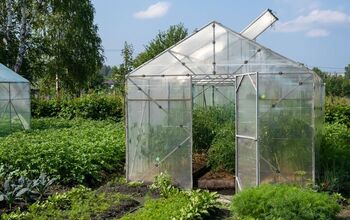






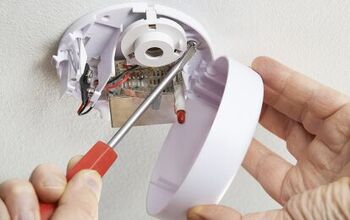
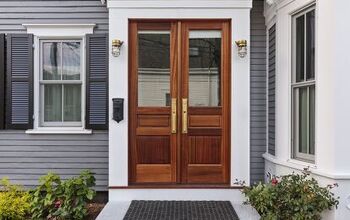
![The 5 Best Angle Grinders – [2022 Reviews & Buyer's Guide]](https://cdn-fastly.upgradedhome.com/media/2023/07/31/9071326/the-5-best-angle-grinders-2022-reviews-buyer-s-guide.jpg?size=350x220)
![10 Best Electric Pressure Washers – [2022 Reviews & Guide]](https://cdn-fastly.upgradedhome.com/media/2023/07/31/9070600/10-best-electric-pressure-washers-2022-reviews-guide.jpg?size=350x220)
